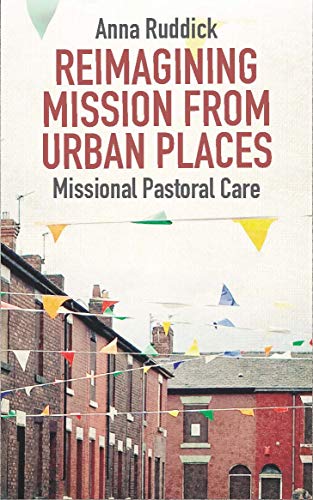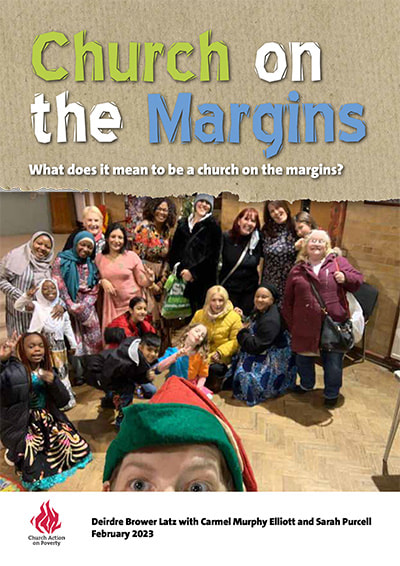Learning is central to who we are and what we do.
Here are some of the learning resources we’ve been involved in creating.
Here are some of the learning resources we’ve been involved in creating.
CREATIVE CONVERSATIONS
Have you ever had a conversation which changed your life? One of those moments where you glimpsed a different way of seeing the world?
In which you connected with someone else or a group of people at a profound level, even if just briefly, and where something new, even unexpected, came out of the connectedness between those people on that day in that place and at that time?
This guide is designed to help you reflect on and be equipped to be a part of more creative conversations.
Developed and written by Anna Ruddick (Urban Life), Cathy Ross (Leader of the Oxford centre for CMS Pioneer Mission Leadership Training) and Mike Pears (Director of the International Baptist Theological Study Centre), the guide contains five chapters which consider how to help enable and, conversely, what might hinder creative conversation: the physical environment, shaping stories, personhood, the people involved and conversations online.
Each chapter has a short section to read, suggestions for further reading and resources, a guide for personal reflection, a brief discussion guide to be used in a group setting, and practical challenges to try out in your day to day life and mission.
The guide can be used by churches and community groups who want to learn to engage more deeply with their neighbours. It will help those who are involved in building relationships between people of different cultures, faith groups and ethnic backgrounds. It is ideal for ministry students who are based in placements and ministry settings and also for research students who want to draw on innovative conversational methods.
A Guide to Creative Conversations is a free resource – download it below:
In which you connected with someone else or a group of people at a profound level, even if just briefly, and where something new, even unexpected, came out of the connectedness between those people on that day in that place and at that time?
This guide is designed to help you reflect on and be equipped to be a part of more creative conversations.
Developed and written by Anna Ruddick (Urban Life), Cathy Ross (Leader of the Oxford centre for CMS Pioneer Mission Leadership Training) and Mike Pears (Director of the International Baptist Theological Study Centre), the guide contains five chapters which consider how to help enable and, conversely, what might hinder creative conversation: the physical environment, shaping stories, personhood, the people involved and conversations online.
Each chapter has a short section to read, suggestions for further reading and resources, a guide for personal reflection, a brief discussion guide to be used in a group setting, and practical challenges to try out in your day to day life and mission.
The guide can be used by churches and community groups who want to learn to engage more deeply with their neighbours. It will help those who are involved in building relationships between people of different cultures, faith groups and ethnic backgrounds. It is ideal for ministry students who are based in placements and ministry settings and also for research students who want to draw on innovative conversational methods.
A Guide to Creative Conversations is a free resource – download it below:
| a_guide_to_creative_conversations_a4_printable__2_per_page_.pdf | |
| File Size: | 1362 kb |
| File Type: | |
| a_guide_to_creative_conversations_single_a4_pages.pdf | |
| File Size: | 1407 kb |
| File Type: | |
More Questions than answers
More Questions than Answers started as a space to articulate some of the uncertainty brought about by the pandemic and explore together some of the issues it raised about our social, cultural and community experiences in mission and ministry in marginal places. Each month we invited someone from the field to kick off the conversation with the issues they are facing in their specific situation/context. We'd then have space to reflect on and grapple with the ideas we'd heard with others. In the end, although we still had more questions than answers, we stimulated our thinking and gained some fresh insights to inform our practice, going forwards. All of these sessions were recorded and are available to watch here.
REIMAGINING MISSION FROM URBAN PLACES
In Reimagining Mission from Urban Places, Urban Life team member, Anna Ruddick asks:
What happens when evangelical Christians intentionally relocate into communities experiencing marginalisation?
Within a changing social and political context, the role of the church in public life and the response of Christians to social issues has taken on renewed energy.
Churches have entered enthusiastically into community engagement projects such as foodbanks and night shelters, with a broad understanding of this as mission. Reimagining Mission from Urban Places offers much needed reflection about the nature of mission and about expectations for missional outcomes.
Using the stories of team members within the Eden Network (which emphasises an 'incarnational' approach to urban mission) the book demonstrates that at its best, mission happens in a shared life rather than being about 'us' telling the listening world. A timely and provocative call to churches, missional groups, those involved in 'Fresh Expressions' and other creative models of community-based church and those training for ministry to reflect more deeply on their practice and theology, the book insists that mission is about difference, love, locality and long-term consistency and, at its best, is slow, complicated and messy.
Reimagine Mission from Urban Places can be purchased in paperback and Ebook formats at Hive and other good book shops.
What happens when evangelical Christians intentionally relocate into communities experiencing marginalisation?
Within a changing social and political context, the role of the church in public life and the response of Christians to social issues has taken on renewed energy.
Churches have entered enthusiastically into community engagement projects such as foodbanks and night shelters, with a broad understanding of this as mission. Reimagining Mission from Urban Places offers much needed reflection about the nature of mission and about expectations for missional outcomes.
Using the stories of team members within the Eden Network (which emphasises an 'incarnational' approach to urban mission) the book demonstrates that at its best, mission happens in a shared life rather than being about 'us' telling the listening world. A timely and provocative call to churches, missional groups, those involved in 'Fresh Expressions' and other creative models of community-based church and those training for ministry to reflect more deeply on their practice and theology, the book insists that mission is about difference, love, locality and long-term consistency and, at its best, is slow, complicated and messy.
Reimagine Mission from Urban Places can be purchased in paperback and Ebook formats at Hive and other good book shops.
CHURCH ON THE MARGINS RESEARCH
Since 2020, in partnership with Church Action on Poverty, we have been researching how the UK’s denominations allocate their resources, and listening to people and churches in communities on the margins.
Churches, at their best, are thriving hubs at the heart of their communities – open and inclusive to all believers and everyone else. Churches at their best connect with and support the local area through local collaborations, shared spaces and resources, and genuine community.
But we found that low-income communities are being disproportionately affected by church closures, and this has ramifications for Christians and entire neighbourhoods. But if national church leaders reinvest instead of retreating, then churches can help whole communities to thrive and build better futures.
So what might it mean to be a church on the margins?
Based on in-depth conversations with people and congregations ‘on the margins’, this report documents frustrations with barriers around disability, literacy, class, language, leadership and power within mainstream churches.
The voices and stories shared are powerful and insightful. They combine faith and a desire for action.
Churches, at their best, are thriving hubs at the heart of their communities – open and inclusive to all believers and everyone else. Churches at their best connect with and support the local area through local collaborations, shared spaces and resources, and genuine community.
But we found that low-income communities are being disproportionately affected by church closures, and this has ramifications for Christians and entire neighbourhoods. But if national church leaders reinvest instead of retreating, then churches can help whole communities to thrive and build better futures.
So what might it mean to be a church on the margins?
Based on in-depth conversations with people and congregations ‘on the margins’, this report documents frustrations with barriers around disability, literacy, class, language, leadership and power within mainstream churches.
The voices and stories shared are powerful and insightful. They combine faith and a desire for action.
| what-does-it-mean-to-be-a-church-on-the-margins.pdf | |
| File Size: | 834 kb |
| File Type: | |
URBAN LIFE
Copyright 2023



